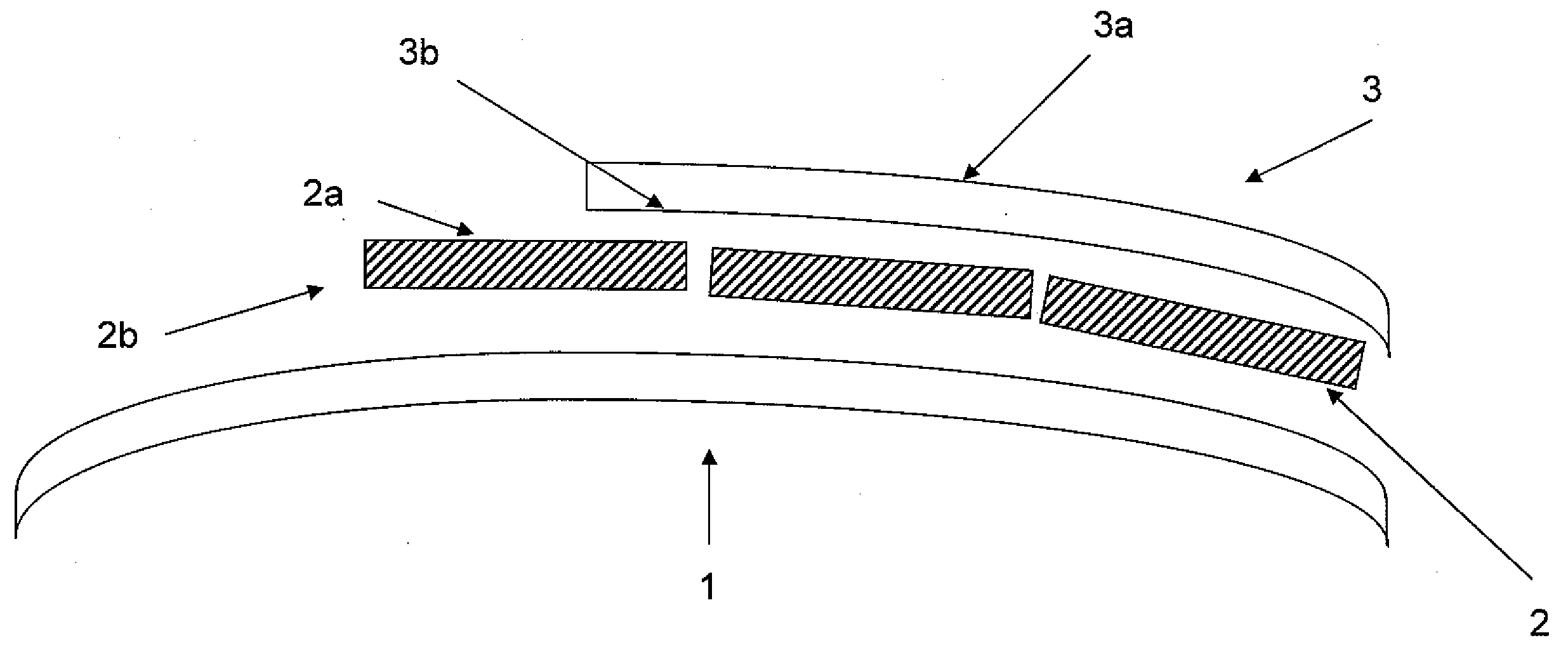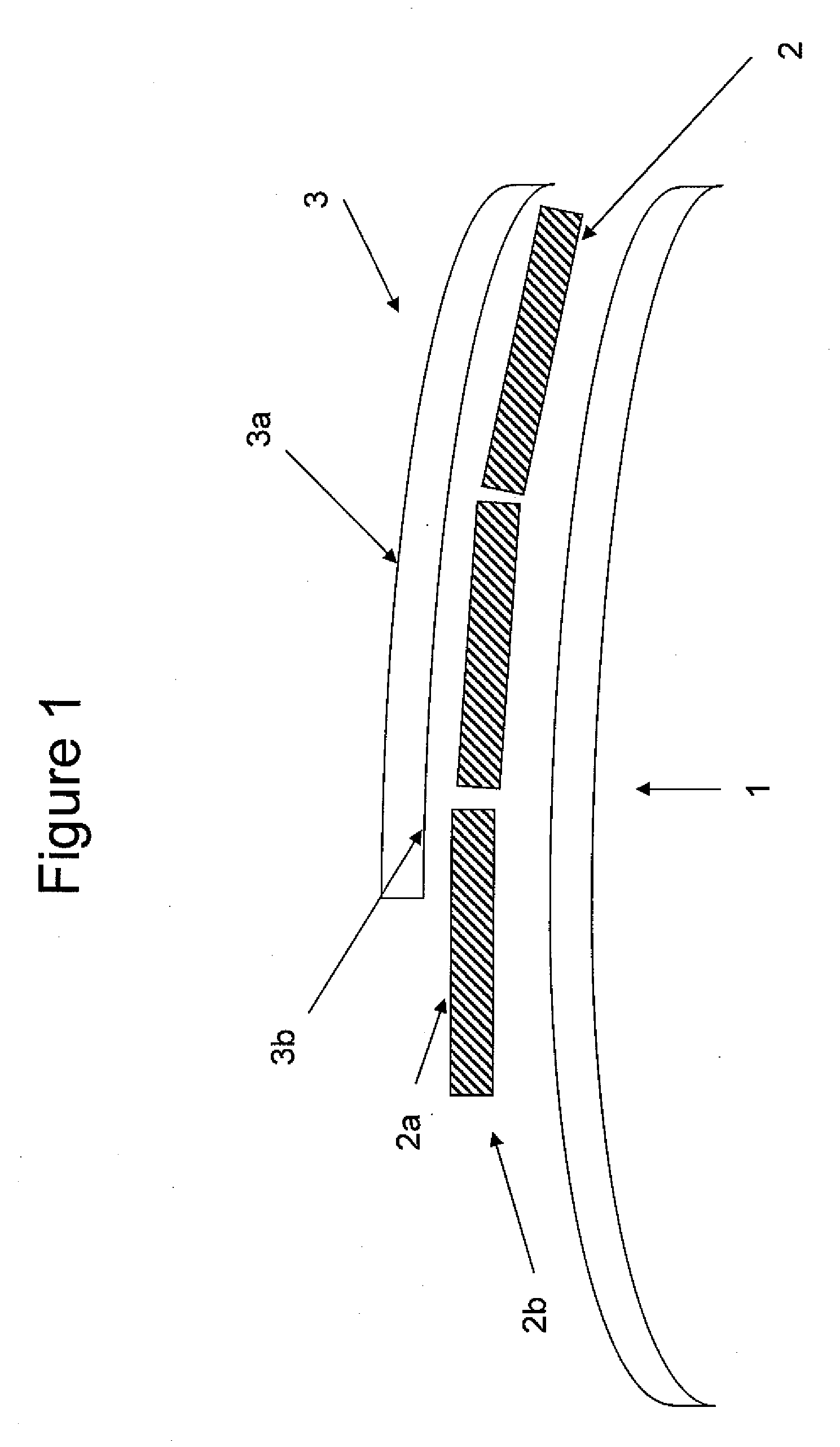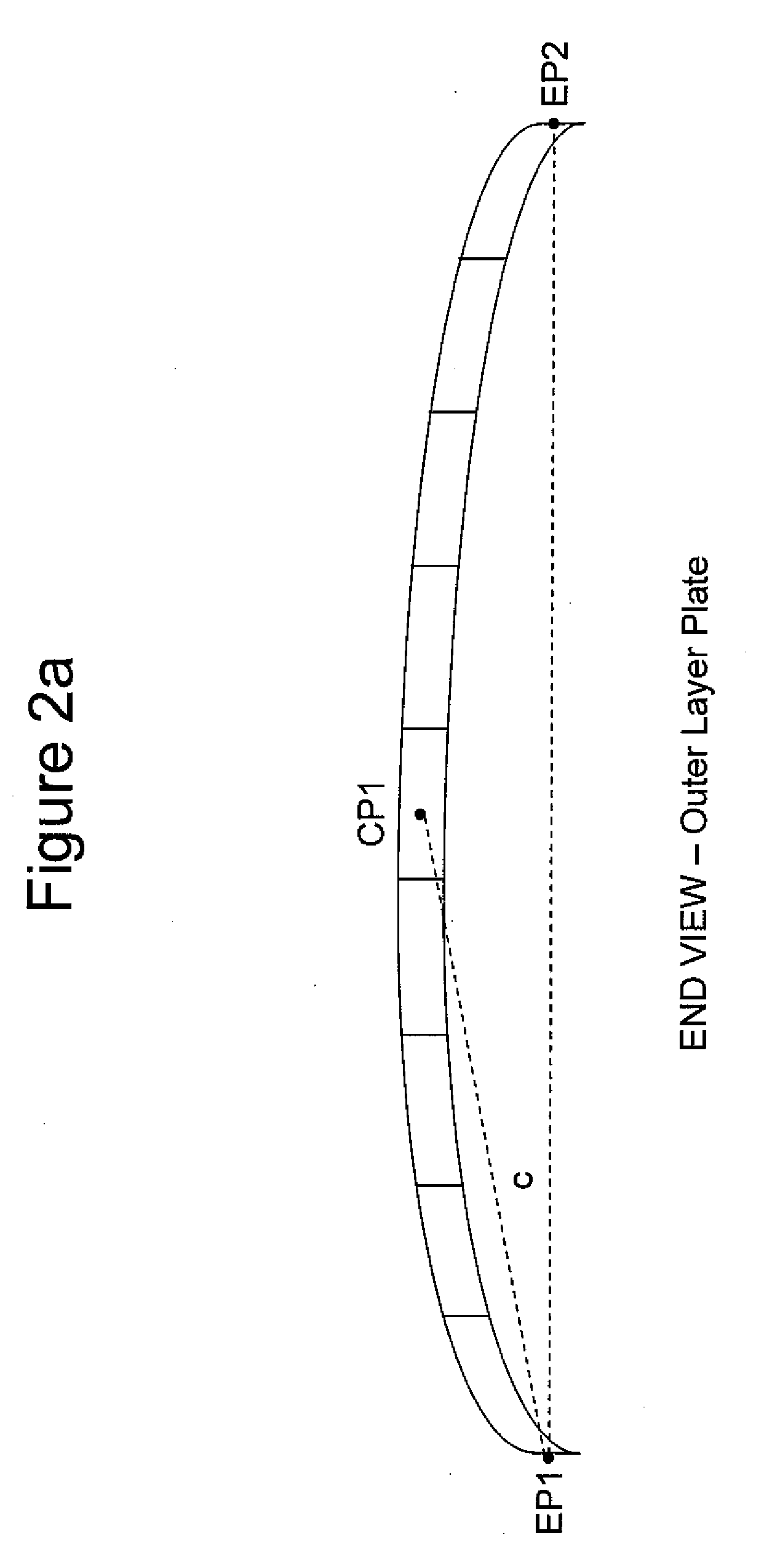Protective covering
a protective covering and protective technology, applied in the field of protective coverings, can solve the problems of many existing protective paddings or devices not adequately protecting objects from pain, injury or damage, and may become displaced from its original or optimal position, and achieve the effect of superior impact resistan
- Summary
- Abstract
- Description
- Claims
- Application Information
AI Technical Summary
Benefits of technology
Problems solved by technology
Method used
Image
Examples
example 1
A Shin Pad
[0063]A protective covering for a shin was manufactured from a plastic shin cover using a commercially available shin pad and a layer of padding. The padding layer comprised a plurality of soft padding units. The plastic shin cover was cut into hexagonal pieces approximately 2 cm in diameter. The pieces were placed on the padding in essentially the same way the pieces were aligned in the original, uncut shin pad prior to cutting. The pieces were connected to the padding by a thermoplastic fiber. A fiber was passed through the center of a piece and through the padding and tied off at each end. Finally, the excess padding was removed. Representative shin pads are shown in FIGS. 3 and 6.
example 2
A Sports Bra
[0064]A protective covering for a sports bra was manufactured from a hard shell plastic mold of a female body and a layer of padding. The padding layer comprised a plurality of soft padding units. The plastic mold was cut into hexagonal pieces approximately 2 cm in diameter. The pieces were placed on the padding in essentially the same way the pieces were aligned in the original, uncut mold prior to cutting. The pieces were connected to the padding by a hot melt adhesive. The excess padding was removed. The protective covering was connected to a fabric in the shape of a sports bra.
example 3
A Soccer Football Shin Pad
[0065]Protective coverings for a shin were manufactured by over-molding 32 separate geometric outer tiles onto a mesh polyester fabric in a way that resulted in a permanent bond. Polypropylene plastic was over-molded (e.g. insert-molding) by injected onto 350G polyester fabric forming outer tiles with a maximum thickness of 2.8 mm. The padding layer comprised a uniform reticulated EVA (ethylene vinyl acetate) foam heat embossed into the form of a plurality of soft padding units. These two components were attached to each other by sewing the perimeters together. An optional intermediate layer was used. The intermediate layer was placed in-between the outer layer plate and the inner layer. The intermediate layer comprised either EVA foam or polyethylene plastic, each having an elongated trapezoid shape about 7 cm wide at the top, about 5 cm wide at the bottom, about 16 cm tall, and about a 0.6 cm thickness. Finally, the excess padding was removed. Representat...
PUM
| Property | Measurement | Unit |
|---|---|---|
| force | aaaaa | aaaaa |
| displacement | aaaaa | aaaaa |
| thickness | aaaaa | aaaaa |
Abstract
Description
Claims
Application Information
 Login to View More
Login to View More - R&D
- Intellectual Property
- Life Sciences
- Materials
- Tech Scout
- Unparalleled Data Quality
- Higher Quality Content
- 60% Fewer Hallucinations
Browse by: Latest US Patents, China's latest patents, Technical Efficacy Thesaurus, Application Domain, Technology Topic, Popular Technical Reports.
© 2025 PatSnap. All rights reserved.Legal|Privacy policy|Modern Slavery Act Transparency Statement|Sitemap|About US| Contact US: help@patsnap.com



